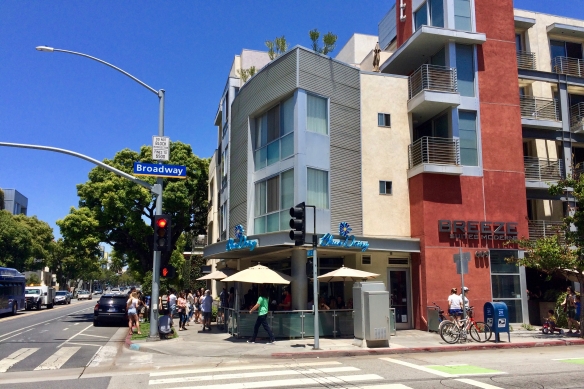This article first appeared on The Healthy City Local.
I ended my blog last week about Santa Monica’s housing policies with some good news, namely that a lot of housing was either under construction in the city or had approvals to proceed to construction. As of the end of March, 759 units were under construction and another 1,384 had received planning approvals. Most of this housing received approval under laws that are no longer in force, but it was at least good to see that the one good thing about the high rents that result from the region’s housing crisis is that they do attract investment to build apartments that will house people for 50 or 60 years.
But then depressing news came to light when the City released its annual reporton housing production. The numbers showed why the state is trying to take control of land use policy. The City reported that in fiscal year 2017-18 only 46 multi-family housing units (apartments or condos) were built in Santa Monica, of which only two were affordable.
This low level of construction continued and exacerbated a trend from fiscal year 2014-15, when housing production fell drastically. While in the 2013 and 2014 fiscal years total multi-family production was 941 units in Santa Monica (of which 503 were affordable!), in the four years since then, only 478 housing units, an average of 119 per year, have been built. This number is fewer than half of the 250 units expected to be built annually under the LUCE, and less even than the average of 217 units built in Santa Monica annually over the past 24 years. (In fact, housing production wasn’t even that good: the report’s construction numbers don’t take into account demolitions. According to the City’s housing reports, from June 2014 to June 2018, the net increase in housing units, after deducting demolitions (and including data for single-family houses), was 422, an average annual increase of only 105.)
Again, the good news is that a fair amount of housing is now in the works, either under construction or approved, in Santa Monica. However, the anemic production of the past four years, and, as I discussed in last week’s blog, the apparent debacle of the Downtown Community Plan, illustrate why Sacramento is not likely to leave housing policy to local governments. Not when Governor Newson wants his legacy to include 3.5 million new homes.
I write this even as the most ambitious proposal to limit local control, Scott Wiener’s SB50, is dead for the year. Sen. Anthony Portantino, of La Cañada/Flintridge, responding to pleas from residents of single-family, suburban areas (such as La Cañada/Flintridge), used his power as Chair of the Appropriations Committee to prevent Wiener’s bill from reaching the Senate floor. The bill drew the ire of single-family zone residents because somewhere along the way a bill that encouraged in-fill urban development had become a bill that would have drastically up-zoned nearly all single-family zones in the state.
This up-zoning of suburbia not only added a poison pill to SB50, but also it was bad urban policy. Why densify sprawl? It doesn’t make sense: if you build more housing off the urban grid, isolated from decent transit, jobs, shopping and entertainment, you magnify the disaster that sprawl is. Wiener needs to bring back a bill that privileges investment in urban housing, and there is plenty of urban land that is zoned for commercial and industrial purposes where this can be done without driving residents crazy. Santa Monica showed how to do this in the ’90s by allowing double the amount of residential development over commercial development in formerly commercial zones in its downtown. A boom in housing resulted.

But cities don’t like to turn commercial and industrial real estate into housing. While no-growth politics coming from affluent homeowners has had a lot to do with California’s failure to build enough housing, a factor that has drawn national attention, another factor has been that cities prefer commercial development that generates taxes over residential development that requires the delivery of services. Cities are loath to convert commercial real estate to housing.
In the interest of promoting economic development cities don’t take into account how many more jobs per square foot of development are now created in office and retail buildings over what existed on old industrial properties, and how many more square feet can now be built in multi-story office buildings than existed in the old one-story factories. Every 1,000 square feet of office development now generates at least three or four jobs, and for those jobs, at least two housing units need to be built. But cities rarely consider that math when rezoning commercial or industrial properties.
Unfortunately, Santa Monica has been a leader in this regard as well, given how it has converted originally industrial areas to offices without sufficient housing for the many more people who work there. In a future version of his bill, Wiener would do well to require more housing to be built whenever cities entitle more commercial development.
As for the suburbs, instead of attacking single-family zoning where we don’t want denser development anyway, what the legislature needs to do is to require local governments to allow (and encourage) the repurposing of malls with added housing and offices (local jobs for suburbanites), and as nodes for transit. Leave the housing subdivisions alone.
Wiener will bring the bill back next year, and I suspect that next time a version of it will get further along in the process. Wiener learned from his mistakes with the first version of his housing bill last year, and I suspect he’ll learn from his mistakes this year. And presumably by then the governor will want to see more progress. This story isn’t over.
Thanks for reading.
